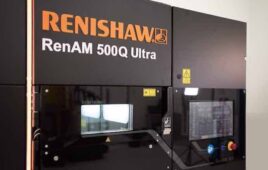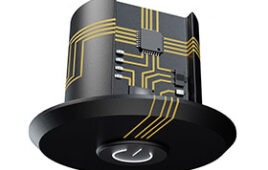In the wee hours of a Saturday morning, Carnegie Mellon University Professor of Materials Science and Engineering Tony Rollett and graduate students Ross Cunningham and Tugce Ozturk sit together in Sector 2 of the mile-wide Advanced Photon Source at the Argonne National Laboratory in Chicago, Illinois. In front of them is an enormous synchrotron x-ray machine, powerful enough to see through heavy metals down to miniscule detail—one millionth of a meter, roughly one hundredth of a human hair. The unique equipment is in such high demand that the team has just forty-eight continuous hours to use the x-rays before they will pack up and (gingerly) carry their data back to Pittsburgh.
Scientists who are able to secure research time with the synchrotron study the internal structure of a wide variety of materials including polymers, biomedical biopsies, and alloys. The synchrotron takes detailed, 3-D images that are used to characterize and understand materials. The images are so precise, in fact, that researchers often turn to synchrotron technology to study fossils to identify ancient insects that can barely be seen under a microscope.
Instead of leveraging this powerful technology to learn about ancient materials, Rollett’s group hopes to gain insight about something novel: 3-D printed metals.
By looking deep inside thin slices of 3-D printed titanium parts, the group examined defects in the printed metal that are invisible to the naked eye and difficult to detect even with current laboratory-grade equipment. These defects, called pores, make the part more susceptible to breakage when the part is exposed to repeated weight or stress. Potential for breakage might not be such a big deal for your 3-D printed toothbrush holder, but it is significantly more important when it comes to a 3-D printed part for a jet engine.
“Carnegie Mellon is bringing really unique research to the table because we are one of the only universities chasing after advanced characterization techniques in the metals 3-D printing space,” says Rollett, who has spent much of his career specializing in materials microstructure and properties such as fatigue.
Although 3-D printing, or additive manufacturing, is currently being used for rapid prototyping, it has its sights set on becoming the mainstream manufacturing process for grander applications, such as aerospace parts, custom biomedical implants, and high performance automobiles.
Improving the internal structure of 3-D printed metal parts is one of the several challenges that need to be met in order for this manufacturing process to be adopted in a more mainstream way. Rollett’s team, in collaboration with Professor of Mechanical Engineering Jack Beuth, recently published a paper in the Journal of Minerals, Metals, and Materials Society, which showed that a majority of the porosity in 3-D printed titanium could be eliminated by making adjustments to the process parameters of the machine. Less porosity means stronger, more reliable end-parts.
“Having a strong understanding of the fundamental science of additive manufacturing materials is necessary in order to use them in aerospace and other demanding applications,” says Beuth. “The ability to visualize porosity and flaws in 3-D with such high precision is a breakthrough capability in additive research.”
Rollett and his team plan to continue their research to determine if it is possible to eliminate all remaining porosity from 3-D printed titanium and other metals. This is a particularly important goal because it is currently thought that some amount of porosity will always exist in 3-D printed materials.
“In a conventional material like steel, there aren’t any of these pores. Besides that, you work so hard to avoid any sort of nonmetallic inclusion,” says Rollett. “In additive manufacturing materials, there they are. You have to figure out how to understand them and deal with them. It is a new challenge the field of materials science.”
Carnegie Mellon’s NextManufacturing Center, where Beuth serves as director and Rollett as associate director, has focused its attention on materials science projects such as this one. As one of the world’s leading research centers for additive manufacturing, the center is working to advance the field of additive manufacturing by meeting the research challenges of the industry.
Rollett’s research at the Argonne National Laboratory consisted of his team working non-stop for two days. Samples needed to be moved or changed at constant two-minute intervals. But for graduate students like Cunningham and Ozturk, it was the excitement around the research that was remembered.
“I had no idea I would have the opportunity to do this kind of research as a graduate student. The equipment that I got to use, from an engineering standpoint, was really amazing,” says Cunningham. Ozturk eagerly adds, “You’re collecting super unique data that no one has ever collected or looked at before.”
Filed Under: 3D printing • additive • stereolithography, Industrial automation




